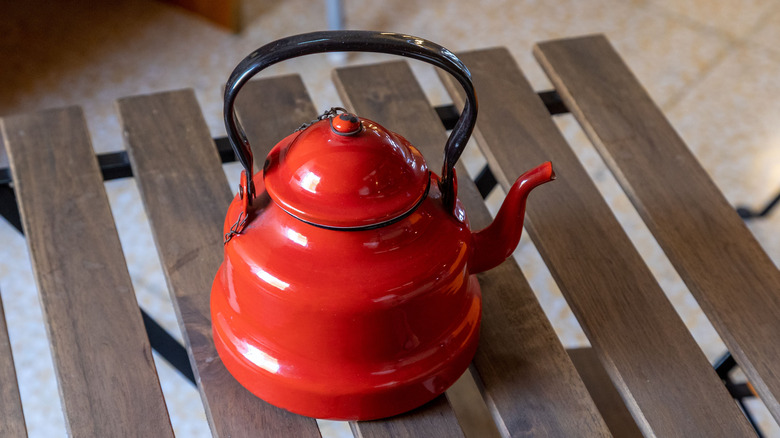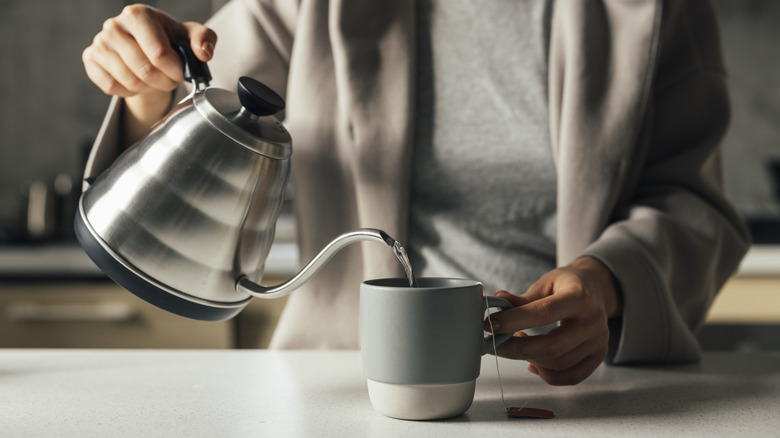What You Should Consider Before Buying A Ceramic Kettle
If your daily routine involves a cup of tea (or five), it might not be your first reaction to think of the humble tea kettle as a multipurpose tool. But, these little beauties tote a myriad of uses, from boiling water for soups to making pour-over or French press coffee, ramen, oatmeal, and more. Because it's an appliance many home cooks reach for so often, it's important to pick the right tool for the job. With that in mind, is a ceramic kettle a good investment?
As any foodie with a sentimental streak will be happy to inform you, kettles are more than just about function. Ceramic carries an inherent nostalgia, with a pleasing design and element of personality that rounds out any tea ritual. Plus, chances are your kettle is a permanent fixture on your countertop or stove, and aesthetics matter. If you have a vintage rooster-themed kitchen, a modern-looking steel kettle might appear a little out of place. Or, maybe you just prefer a warm, kitschy, homey vibe.
Either way, ceramic is a great material for a kettle because it naturally retains heat and helps avoid a metallic taste. If you're looking for an electric ceramic kettle with a heating element of its own, freeing up your stove burners, the BELLA Electric 1.2L Ceramic Kettle ($64.98) is a workhorse with a formidable capacity that comes in a variety of patterns. Still, for all its charms, ceramic isn't without its drawbacks as a kettle material.
Ceramic doesn't age as well as stainless steel
Even if your ceramic kettle is coated in a layer of protective glaze, stainless steel still tends to be more durable and less prone to chips and scratches over time. Stainless steel is also crack- and rust-resistant, easy to care for, and it holds up better against another type of gradual wear: Discoloration. If you're looking to invest in a long-wear appliance, stainless steel may be a better choice.
Another factor to keep in mind is weight. Ceramic kettles are noticeably heavier than steel varieties. If you cannot comfortably maneuver a full ceramic kettle using one hand, it could become dangerous when that kettle is (literally) piping hot.
Admittedly, the lesser durability certainly doesn't erase the aesthetic appeal of ceramic over stainless steel kettles. Rest assured, there are some happy mediums. For the best of both worlds, the Le Creuset Classic Demi Teakettle from Williams-Sonoma ($84) is a steel stovetop kettle wrapped in a porcelain enamel glaze. Or, you could prioritize both durability and a warm aesthetic by choosing a cast iron tea kettle instead, like this one from World Market ($34.99). Cast iron kettles are hardy, heat up faster, and have better heat retention, keeping your water hot for longer. Sold on stainless steel, but not into the modern aesthetic? This stainless steel electric gooseneck kettle by BODUM ($59.99) is coated in a matte black finish with cork details, adding elements of warmth to soften the otherwise harsh visual edges.

